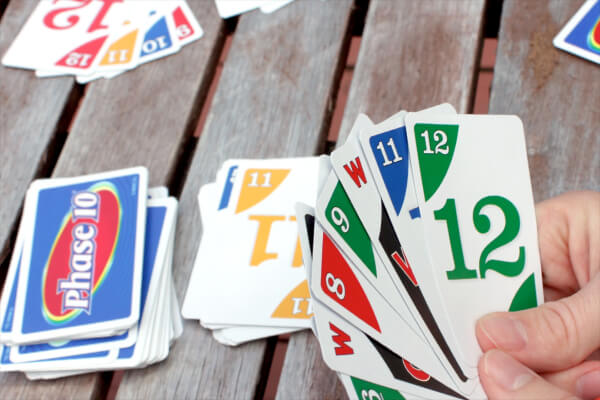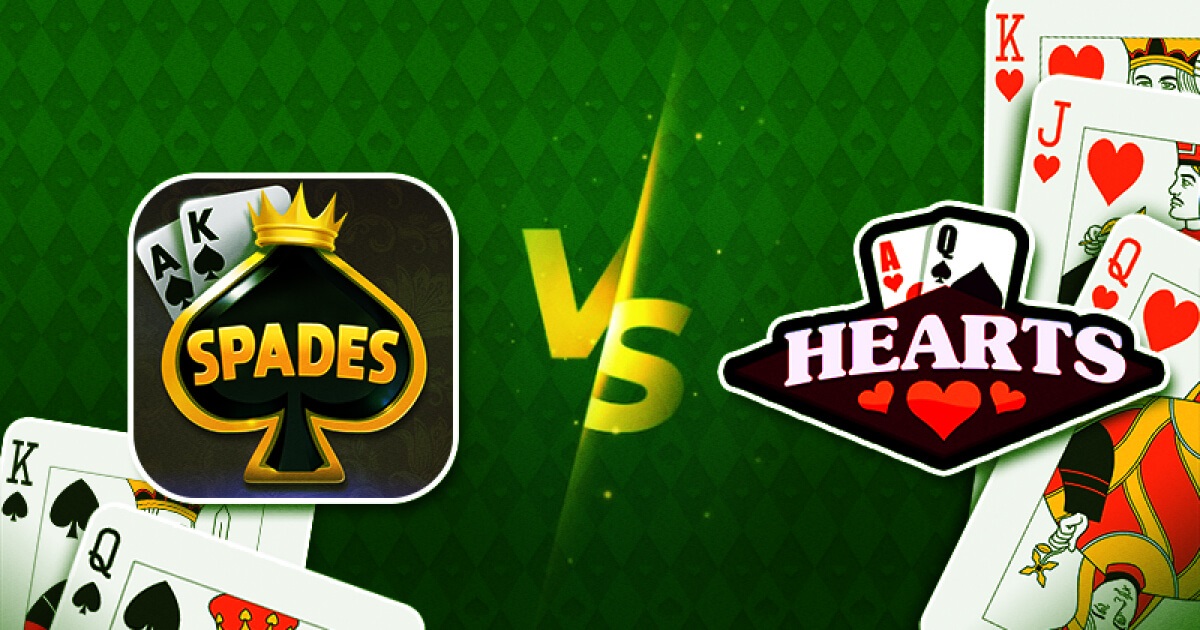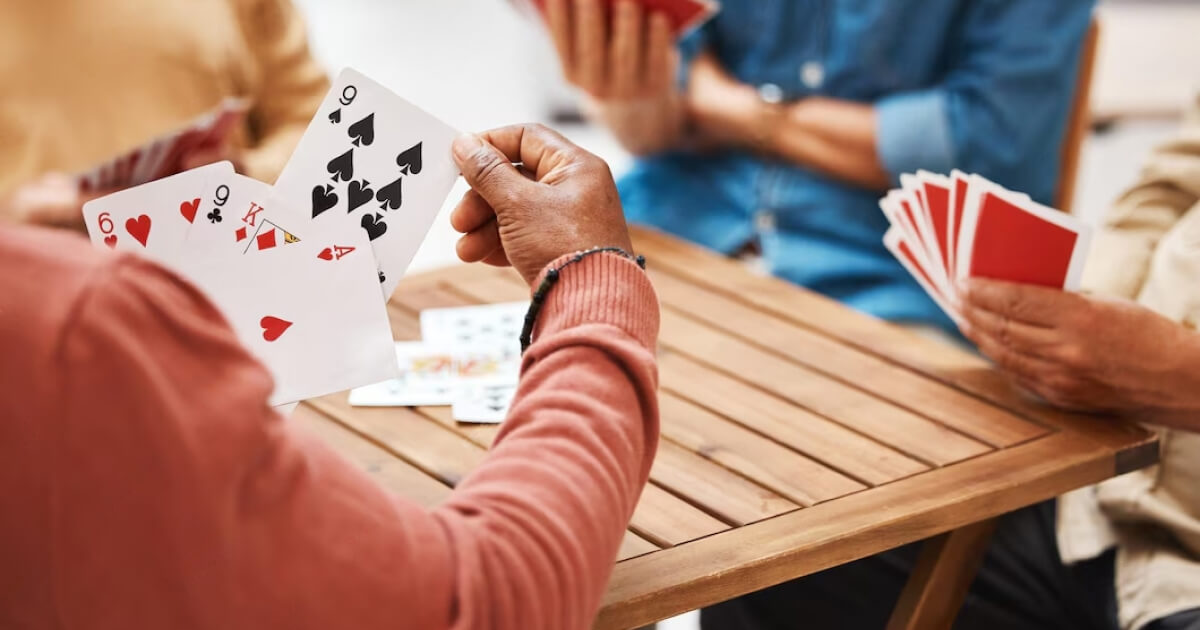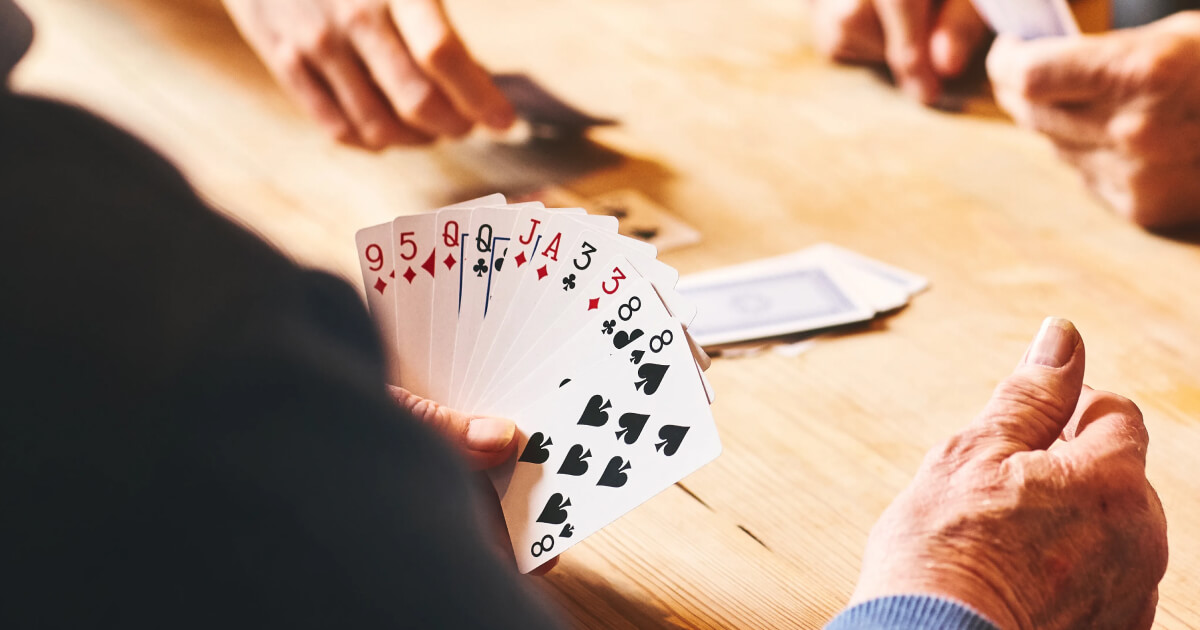In 1982, popular card gamer Kenneth Johnson developed Phase 10, a novel twist on the classic Rummy game. Phase 10 card game is ideal for family game evenings or laid-back get-togethers with its distinct stages and interesting gameplay.
This tutorial will dissect the laws and provide detailed, step-by-step directions to enable you to qualify as a Phase 10 professional.
Here is a Guide on How to Play Phase 10 Card Game
➨ What You Need to Play
Designed for 2–6 players, Phase 10 calls for a specifically Phase 10 card deck. Along with wild and skip cards, the deck comprises numbered cards in four colors. Get ready for some great fun by gathering your friends or relatives and grabbing the deck!
➨ The objective of the Game
Phase 10’s goal is to be the first to finish all ten stages, same as in previous Rummy variations. Every phase has certain criteria, so players have to finish the current phase before entering the next. The game is won by the first player finishing all 10 stages.
Getting Started: The Deal

Deal ten cards to each player starting by shuffling the Phase 10 deck. Remaining cards create a draw pile arranged face-down in the middle. Start the discard pile by turning the top card of the draw pile face-up.
Also See: A Comprehensive Guide on Crazy Eights
Gameplay: Taking Turns
Played in turns, Phase 10 sees each participant drawing one card from either the draw pile or the discard pile at the beginning of their round.
Then, players try to fulfill the criteria of their present phase by creating sets or runs of cards. A set comprises of cards with the same rank; a run is an arrangement of consecutive numbers.
Players have to discard one card from their hand at the conclusion of every round. Once a player finishes their phase, they lay down the necessary cards and continue playing until they discard their final card, concluding the round.
The Ten Phases
The core of Phase 10’s gameplay lies in its ten unique phases. Each phase has specific requirements that players must meet before moving on to the next phase. Here are the ten phases:
➨ Phase 1
Two sets of three
➨ Phase 2
One set of three and one run of four
➨ Phase 3
One set of four and one run of four
➨ Phase 4
One run of seven
➨ Phase 5
One run of eight
➨ Phase 6
One run of nine
➨ Phase 7
Two sets of four
➨ Phase 8
Seven cards of one color
➨ Phase 9
One set of five and one set of two
➨ Phase 10
One set of five and one set of three
Sets are groups of cards with the same rank, such as three 5s or four 9s. Runs are sequences of cards in numerical order, such as 3-4-5-6 or 8-9-10-11.
Special Cards: Wild and Skip
Phase 10 card game includes wild cards and skip cards that add an extra layer of strategy. Wild cards can substitute for any card in a set or run, making them valuable for completing phases. Skip cards allow players to skip an opponent’s turn, providing a tactical advantage.
Completing Phases and Hitting On

Once a player completes a phase, they lay down the required cards and continue playing until they discard their last card. Players can also hit on completed sets or runs by adding extra cards to them.
For example, if a player has completed a run of four, they can add more cards to extend the run, such as adding a 12 to a run of 8-9-10-11.
Ending the Round: Going Out
A round concludes when a player goes out—that is, throws their final card. Scores at this time are computed using the cards left in every player’s hand. The round winner earns points equal to the cards remaining in their opponent’s hands’ combined worth.
Scoring and Winning the Game
In Phase 10, points are awarded based on the remaining cards in players’ hands at the end of each round. Here’s a breakdown of the point values:
- Cards 1-9: 5 points each
- Cards 10-12: 10 points each
- Skip cards: 15 points each
- Wild cards: 25 points each
Player 1 gets 15 points (5 points for each card) for instance, if Player 1 goes out and Player 2 has cards 2, 6, and 7 left.
The game is won by the first player to finish all 10 stages. However, if two players finish the last phase in the same round, the person with the lowest score wins.
Strategy and Tips for Phase 10
Success in Phase 10 requires a mix of strategy and luck. Here are some tips to help you get ahead:
➨ Prioritize Completing Phases
Concentrate on finishing your current phase quickly. The quicker you traverse the stages, the closer you will approach game victory.
➨ Use Wild Cards Wisely
Save wild cards for when you most need them, such as finishing a challenging phase or extending a run.
➨ Discard High-Value Cards
Try to utilize or discard your high-value cards—skips or wilds—early to prevent your opponent from scoring too many points.
➨ Hit On When Possible
Take benefit of opportunities to hit on completed sets or runs. This might assist you go out more likely and cut the quantity of cards in your hand.
➨ Watch Your Opponents
Watch what cards your opponent is pulling out and discarding. This will assist you to predict their actions and provide hints about their tactics.
Phase 10 Card Game Rules
To summarize the key instructions and official rules of Phase 10:
Each player is dealt 10 cards at the beginning.
- Players draw one card at the start of their turn and discard one card at the end of their turn.
- Players must complete their current phase before being allowed to hit on cards.
- Once a player clears their hand of cards, they have gone out and won the round.
- If a player has completed their designated phase, they must complete the next phase in the list in the upcoming round.
- The first player to complete all ten phases wins the game.
- If both players complete the last phase in the same round, the winner is determined by scores.
Example of Gameplay
To illustrate how Phase 10 is played, let’s look at an example:
➨ Phase 1: Two sets of three
- Player 1 has 3, 3, 3, and 7, 7, wild. They complete Phase 1 and lay down their cards.
- Player 2 has completed their phase with two sets of 3 and 4 cards.
- Player 2 adds two 7s to Player 1’s set of 7s.
This process continues until one player discards their last card and goes out, ending the round. Both players then move on to Phase 2, regardless of who won the round.
Conclusion
Combining Rummy’s components with original phases and strategic gameplay, Phase 10 card game is a fun and demanding. Understanding the guidelines and using the advice in this article will help you to be on your way to conquer Phase 10 and enjoy many hours of enjoyment with friends and relatives. Thus compile your Phase 10 deck, mix those cards, and let the games start!




